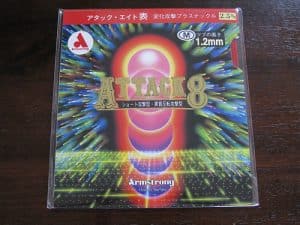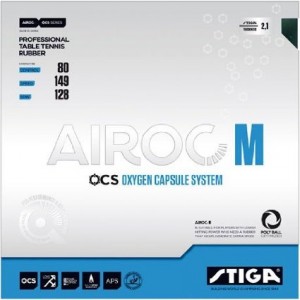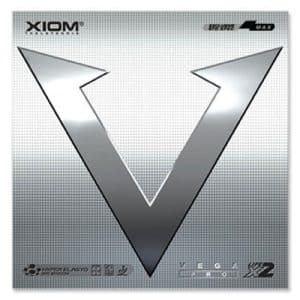Choosing table tennis rubbers are equally important to select a table tennis blade. This is because when you hit the ball, the
There are a couple of factors to consider before choosing your table tennis rubbers:
Table of Contents
1. Colour of table tennis rubber
According to ITTF regulation, the table tennis rackets must have red color on one side with black color on another. This is because nowadays, it is very common to use a different type of rubbers for forehand and backhand. So if both sides of your racket has the same color, it would be very difficult for your opponent to distinguish the type of rubber that is hitting the ball.
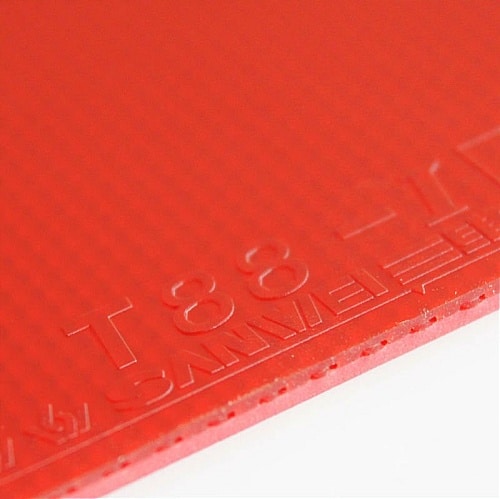
This two-color rule was announced in the mid of 1986 by ITTF to help table tennis players quickly identify an incoming ball. Usually, the red side is used for a forehand, while the black side is used for a backhand (but not compulsory).
- Types of table tennis
rubber
There are three main types of table tennis rubbers:
2.1 Inverted
It is the most common and most popular special for pre-assembled table tennis rackets. The pips will face toward the blade. So the smooth side of the
The level of the surface’s tackiness has an impact on the sensitivity of the spin ball. It means that a tacky
This kind of
2.2 Short-pips
Regarding short-pips
2.3 Long-pips
The long pips
- The thickness of the
rubber
The thickness of the
1.0 – 1.5mm > It is mainly used by all-round and defensive players to maximize their control and touch. It is more suitable for the one who loves to play close to the table due to a relative lack of power. This type of thickness is also great for chopping the ball by a defensive player.
2.0mm > The most popular and standard thickness. It offers you an outstanding balance between speed, power, and control. All-round offensive players use it.
2.5mm > Some manufacturers refer to it as “maximum thickness” because 2.5 mm is the maximum limit allowed by ITTF. It is generally used by offensive players who prefer very fast speed and powerful topspin (loop).
- Forehand or backhand side
The advanced players will commonly use a different type of rubbers for forehand and backhand. There is no exact rule about choosing
- Your table tennis blade
The surface of your blade is another important factor. For instance, using a hard surface blade with hard surface
The general concept is trying to make the combination that offers you a balance between power, control, and spin. Nevertheless, some advanced players may want to play with extreme style.
Recommended Table Tennis Rubbers for A Beginner
A beginner should focus on control with a reasonable amount of spin power. Try to avoid the fast
Trying Different Rubber
There is almost no way to pick the perfect
Experimenting with various rubbers will make you aware of the different spins and speeds between you and your opponent. There is a wide variety to choose from in each skill level and style of play, so it shouldn’t be too difficult to stay in your element.
As most players say to beginners, you do not want to get a table tennis
If you have not grasped the basic strokes with the
It can be from the same brand or different brands. Realize some brands are more expensive than others and have fewer beginner and intermediate options available.
The bottom line is that you want to improve your game, not drown it. You want to get a
Initially, the ball should be bouncing off your
The Friendship 729 rubbers are a popular beginner sheet. The JUIC 999 line has some great intermediate and more advanced rubbers that are probably some of the cheapest out there.
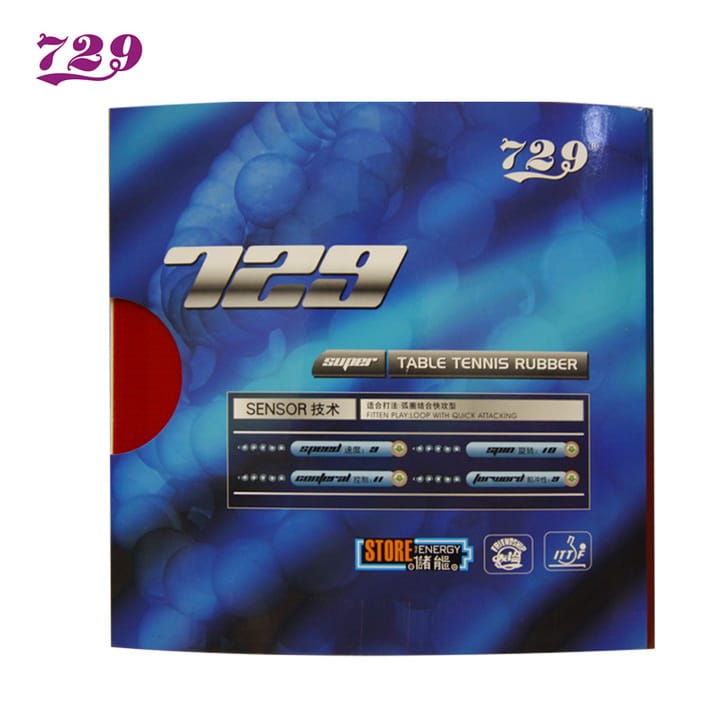
Generally, you want a thicker sponge (2.2, Max) on your forehand and one or two less (1.9, 2.0, 2.1) on your backhand. Rubbers also play very differently on different blades, but I’ll leave blades for another post.
However, I will say that a middleweight blade (about 78-87) is the most promising. A decent blade, probably with a Balsa wood core for better control, is good; and medium speed. It allows you to really feel the upgraded rubbers.
The Importance of Choosing The Right Table Tennis Rubber
After some time, many players look to other types of table tennis rubbers for their rackets. These players want to take their game to the next level. A new table tennis
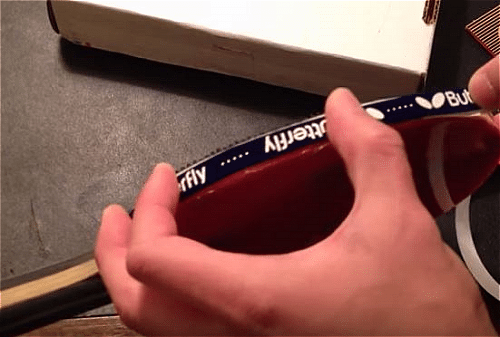
First, get another opinion from someone who knows table tennis and the best table tennis
The player should watch the types of strokes you use and help suggest which table tennis
Style of play makes a huge difference in choosing the suitable table tennis
Some players prefer that the same table tennis rubbers are applied to both sides. Others want a variety of table tennis rubbers to compliment their style of play.
Table tennis rubbers can differ between the thickness and hardness. The thicker the table tennis
Similarly, the same thing goes for the hardness of the table tennis
Your style of play
Before you go into buying a custom paddle, you needed to know your style of play.
As you might expect, a different style of play will require various rubbers. But think of how you use your forehand and backhand. Chances are, they will be different.
Therefore, you will want to buy various rubbers for your forehand and backhand. The above doesn’t always necessarily hold as well. So if you feel like your stokes are pretty similar on both sides, you can use the same rubbers.
But ultimately, your style of play will most likely decide the rubbers that you need. Now let’s take a look at the different component of table tennis rubbers and see how they would affect your paddle:
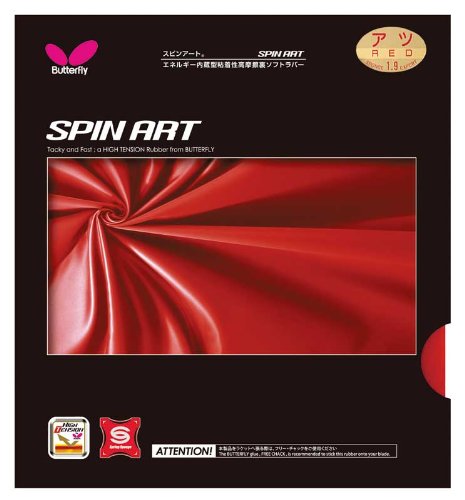
The sponge of your table tennis has a different aspect that needs consideration. It includes the sponge thickness, hardness, and density and whether it should be bought with the top sheet or not at all.
Sponge thickness
The thickness of the sponge determines how fast and how much control your
So it’s easy to understand that offensive players will use thicker sponges in general, at least 1.9mm or more. Most professional table tennis players also tend to use thicker sponge
Sponge hardness
The hardness of a sponge also plays an essential factor in the speed of the table tennis
If we look into the control aspect, it depends more on the type of strokes being used. Ball smashers tend to like harder sponges, whereas loopers prefer the softer sponges for their table tennis
What if I want to buy the sponge separately from the top sheets?
Some players might look for the perfect combination and look for any way to customize their table tennis paddles perfectly. If you are on these players, be warned that not all combinations are legal for competition. But the majority of players will find a
Play without a table tennis sponge
Yes, this a possibility, but you will need to play with pimple-out table tennis
Let’s move on to the top sheets.
It is the top surface of your table tennis paddle that sits on the blade. The top sheet is the part that comes in contact with the ball. Just like the sponge, the top sheet will have various factors affecting its performance.
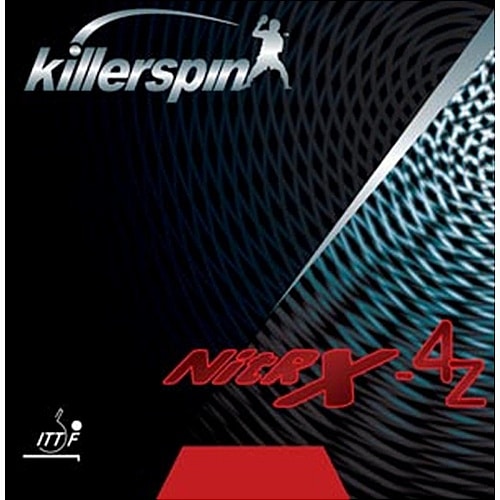
The player can choose to stick with regular table tennis
Tackiness
The tackiness of table tennis
Other table tennis
Generally, the tackier the
In today’s modern game, most professionals use speed glue to increase the speed and spin produced by their table tennis rubbers. They also prefer using less tacky since it is less affected by the opponent’s spin while the speed glue increases the speed and spin produced. If you think about it carefully, this sort of combination gives a player the best of both worlds.
So what is speed glue?
Generally used by advanced players for competitive tournaments, speed glue increases the paddle’s spin and control. However, beginners are advised to avoid speed glue as they risk not developing their technique and play style.
Another point-needed consideration is the price of speed glue. It’s pretty expensive as a matter of fact! Gluing up your table tennis
Top sheets thickness
The top sheet thickness also varies; however, it only applies to players who buy their sponge and rubbers separately. If you are going this route, then the combination of the sponge and table tennis
Top sheet hardness
Just like the other factors, this will affect the spin and control of the ball. A hardtop sheet will reduce the dwell time and hence give less spin than a softer top sheet.
Weight
It is also crucial as you don’t want to end up with a paddle too heavy or too light. As you might already be aware, table tennis rubbers come in different weights also!! So rubbers with very thin or no sponge will tend to be lighter than those with sponges.
If you use speed glue, it will add to the overall weight of the bat as well. It would help if you remembered that some of the solvent found in the glue would build up as residue over time.
Any other advice I should know before buying my table tennis rubbers?
I think your best bet would be to ask your coach or an expert in table tennis to watch you play. They will be able to assess your strength better and whether you are an offensive or defensive player. If you play for a club, get your friend’s opinion too.
Once you have something to work with, check if you can try out some rubbers. It’s easier if you play for a club as you have lots of different players with varying play styles. You could politely ask to borrow their bat and see how to feel playing with it.
But make sure you try all types of strokes and play a few matches before you make your mind up. Check whether you like the feel of them and how they compare to your old rubbers. Always remember you want rubbers that match your style of play.
Finally, once you have your new table tennis rubbers, give yourself enough time to adjust to them. It can take a few weeks before you adjust properly to the
Related post:

Warren Davies


